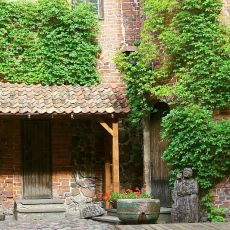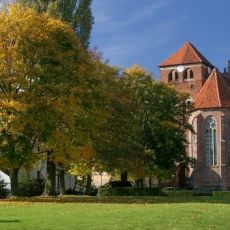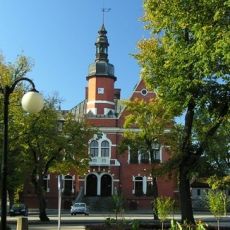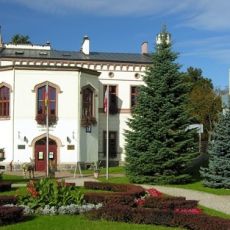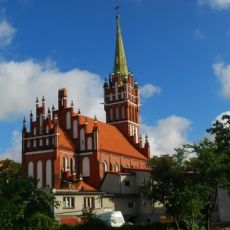Accommodation in Kętrzyn and closest towns
Kętrzyn today owes its name to a great man, historian, ethnographer, researcher of Masuria and Prussia, a Polish activist involved in helping the January insurgents - Wojciech Kętrzyński. Kętrzyński was born in Lotzen (Giżycko) as Adalbert von Winkler. After he learned about his Polish background, he returned to the name of his ancestors - Kęttrzynski. In recognition of his merits after the Second World War, the old name of the city of Rastenburg was changed to Kętrzyn.
Kętrzyn was founded in the fourteenth century by the Teutonic Knights, who built here, preserved to this day in a changed form, the castle. Currently, the castle has its headquarters, among others Museum. Wojciech Kętrzyński. Among the collections of the institution, a collection of sculptures from the 15th century, epitaphs from the 16th to the 18th century, unique funeral banners: in the memory of Fryderyk Groeben, participant of the Battle of Vienna and the only funeral banner of the deceased child in the area of the former Prussia. three years old Botho Ernst zu Eulenburg. A special value for the history of Masuria is presented by monuments secured in nearby manors and palaces just after the war, including a collection of eighteenth-century stove tiles.
Among the monuments of Ketrzyn there is also a collegiate basilica of St. George. The temple is the best preserved church in Masuria region, typically defensive. Powerful thick walls, defensive porches (today not preserved), two monumental towers were to serve the defense of the city and the shelter of its inhabitants in case of danger. A characteristic feature of Kościelna parish church is the "presbytery curves" that do not lie exactly on the axis of the nave, but are deviated from it. The church also draws attention to Gothic crystal vaults, Terletzki's organs (the first organs were built here by Josue Mosengel - the creator of the organs in the sanctuary in Święta Lipka) and a prisoner who can be entered from the church. Inside, a pulpit from the end of the 16th century has been preserved with the unique images of Marcin Luther and Filip Melanchthon - the precursors of the Reformation.
Next to the temple is the building of the church of St. Jana, originally a cemetery chapel, currently the only Evangelical church in Kętrzyn. In Kętrzyn in the 16th century, the famous gymnasium was founded - a school whose graduation gave the right to study at the University of Koenigsberg, the so-called Albertin. The pupils of the Kętrzyn school were, among others remembered Wojciech Kętrzyński and Wilhelm Vien, later Nobel Prize winner in physics. Plaques commemorating these famous students of Kętrzyn's school today decorate her old walls. In Kętrzyn, it is also worth seeing the classical masonic lodge and the former synagogue. Kętrzyn is famous for one of the longest stables in Europe (about 200 m in length), where there are 162 boxes for horses. In the complex of Kętrzyński Stada Ogierów built in 1877, horses of the Trakehner and East Prussian breeds were raised until 1945. Today, there are cold-blooded horses and horses of precious breeds. Kętrzyńskie Stado is the record holder of the world in the so-called handrail - a demonstration consisting in joining more stallions in a row. Ketrzyn's world record is 22 stallions.
Nakomiady
Wonders are bought here by tourists from all over the world. Every ceramics produced in Nakomiady is unique. Tiles are made by hand according to strictly defined rules that have been in operation for centuries. Traditional technology, manual work at every stage of work - from the preparation of the model and forms by casting and firing to precise decorating, the heart inserted in every move - all this makes the tiles produced in the manufacture in Nakomiadach unique.
The local manufactory has a centuries-old tradition - it was created over 300 years ago, in 1704. It was commissioned to expand the existing von Hoverbeck family palace. Originally, mainly bricks were made and burnt from local clay deposits. At present, this manufactory is the only plant in Poland that manufactures tiles and ovens according to old rules.



